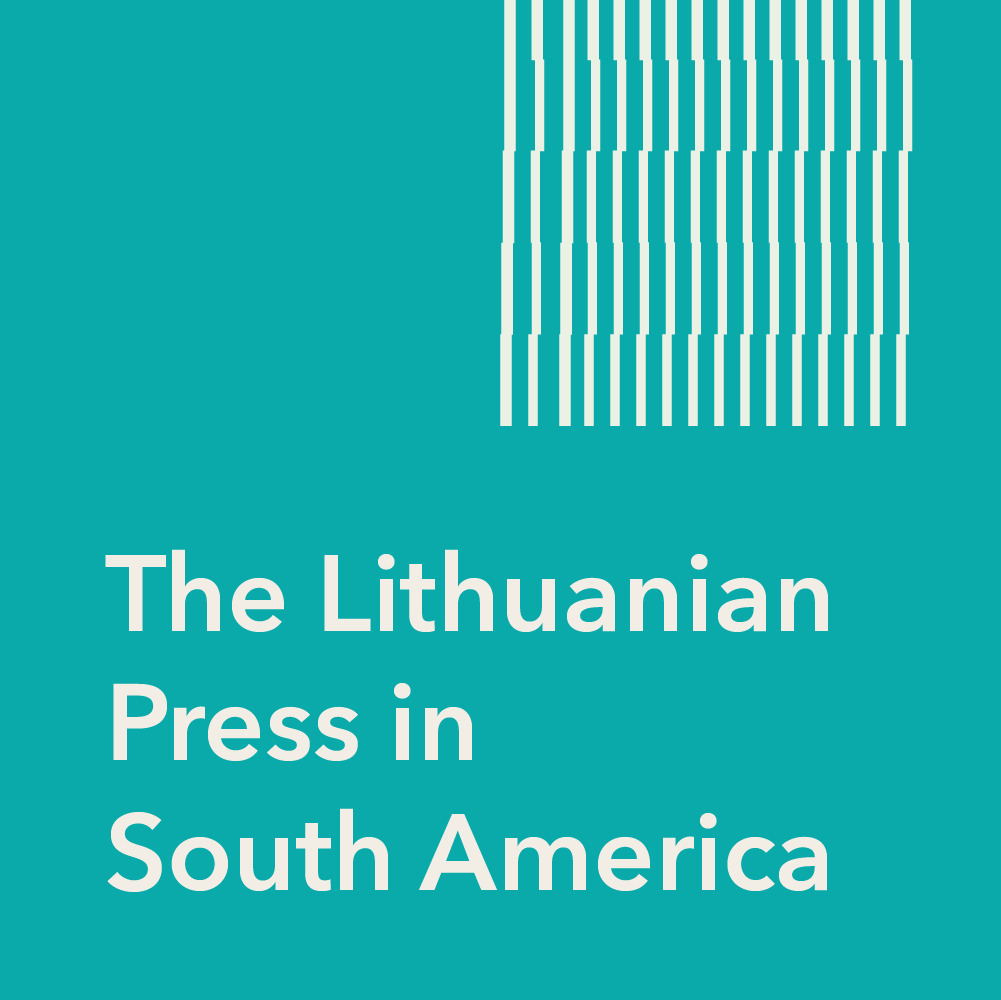-
-
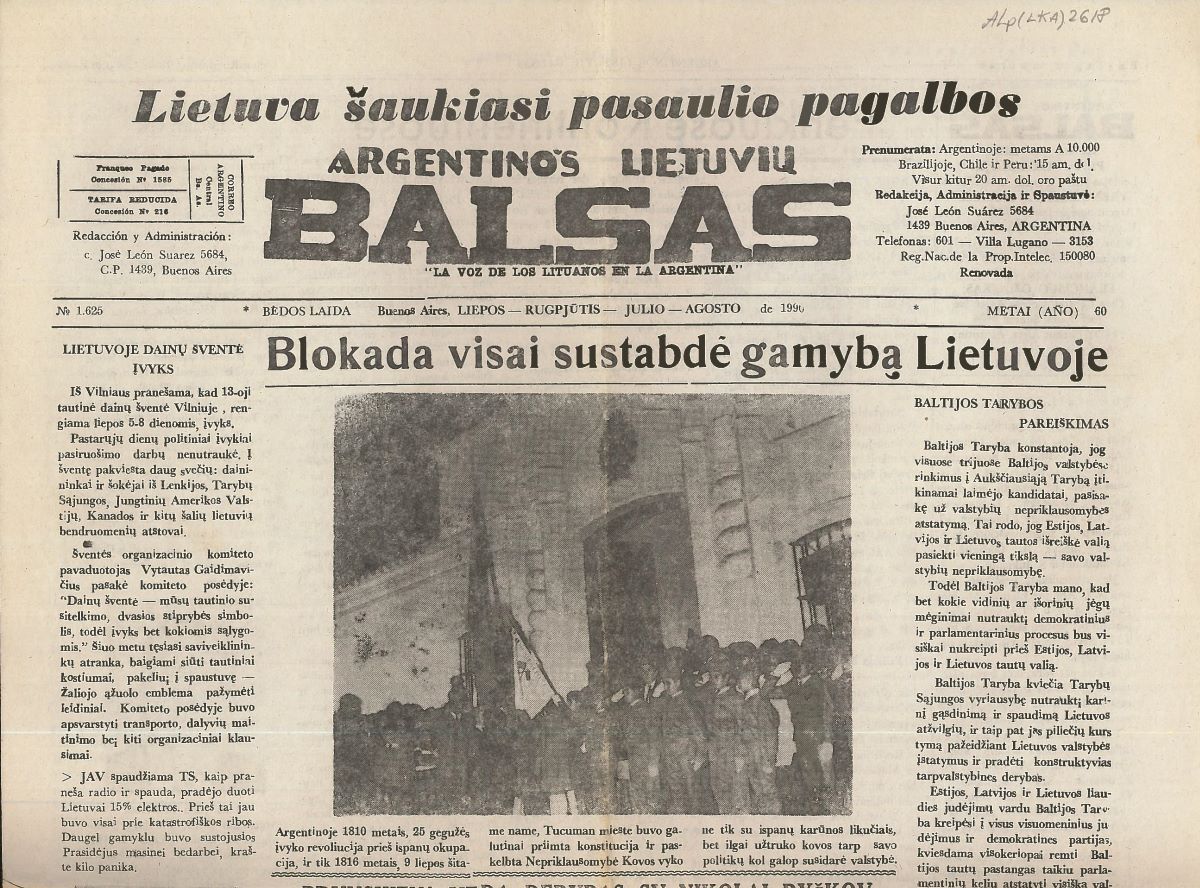
July-August 1990
Argentinian Lithuanian Voice
Argentinos lietuvių balsas
The oldest Lithuanian newspaper in South America, called The Voice until 1930, was published from 1927 to 2001 in Buenos Aires. Established by the second wave of Lithuanian immigrants to Argentina, it reflected their lives, their cultural activities, as well as events in Lithuania and the world. Older issues can be found on the portal epaveldas.lt. A social-democratic newspaper, at first it was in competition with the nationalist Time, both trying to attract more readers and fortify their positions with opposing political views. Eventually, their confrontational positions disappeared and they began working together, probably because once Lithuania’s independence was restored, the newspaper needed a new profile. Publication was often hindered by financial difficulties, and required greater efforts to solicit subscriptions, donations and advertising. In 1995 the newspaper became a monthly.
A great deal of space was dedicated to news from Lithuania, and also to organizationsand individuals in the diaspora. In 1997 the newspaper celebrated its 70th anniversary. In an article published in August of that year (No. 1692), long-time editor Pranas Ožinskas wrote that only determination and resourcefulness enabled the newspaper to continue publication for so many years. In charge of it from 1945 to 1993, with pen and notebook in hand he was a familiar figure at most Lithuanian events well into his golden years. He was considered the “last man standing” in the history of the Argentinian-Lithuanian press. Journalist Algis Kusta quotes him as follows: “Our difficulties grow each day. Whatever we collect from our subscribers is barely enough to cover mailing costs. If we didn’t put the newspaper together ourselves, it would not exist.” When he died, Emilija Zastanavičiūtė-Ožinskienė continued his work for a time, but when she was unable to continue, it closed in 2001.
A. Kusta on P. Ožinskas: interview. -
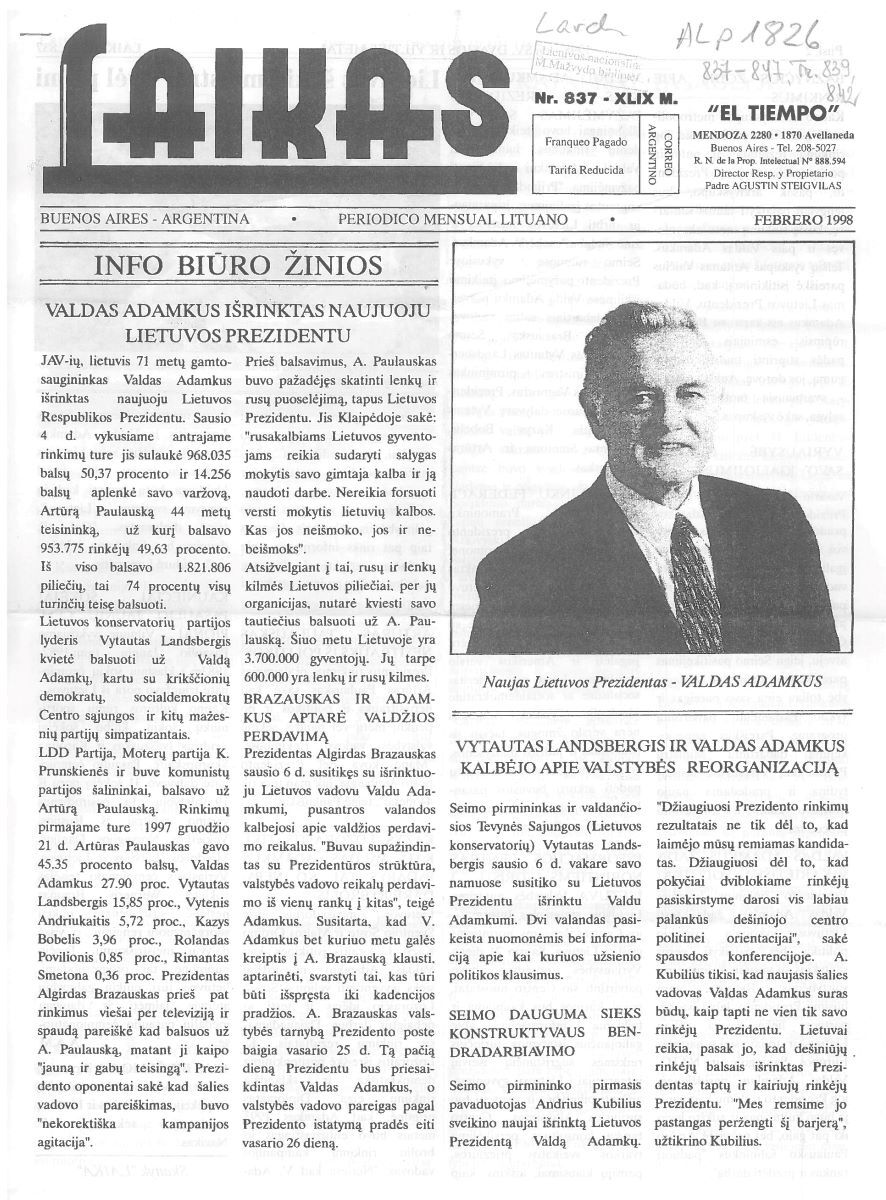
No. 837, February, 1998
Time
Laikas
In many ways the Argentinian Lithuanian newspaper Time, established in 1948 and published in Buenos Aires was similar to the US newspaper Friend. Attractively illustrated, with many interesting columns, the newspaper collaborated with the world press and various Lithuanian organizations, and had readers in North and South America, and even Europe. Time was a patriotic-religious newspaper established by the Marian Fathers who came to Argentina after World War II and helped unify the younger and older generation with cultural retention. Aside from religious content, the newspaper covered news on Argentinian Lithuanian life, events, and the activities of various organizations as well as Lithuanian current events and the Lithuanian freedom cause. In time, its editorial staff, frequency and format changed.
In about 1957, the monthly magazine became a newspaper. Adding to the issue of bilingualism that arose in the press, conflicting political ideologies tested Lithuanian unity and cultural life. After 1990, its existential crisis did not lessen. From the beginning, the publication’s goal was to stand guard for the homeland, and bring the Lithuanian language to its people in the South American diaspora. However maintaining this goal became problematic. The decline in readership and available writers as well as lack of interest from the younger generation embracing new technology created a heavier burden than the publication could sustain. In 2002 Time changed once more, becoming a one-page monthly newsletter, but barely lasted until the end of the year. In an interview about discontinuing the newspaper, longest-term editor (1967 to 2002) Augustinas Steigvilas said that there were no readers or supporters left. The huge Spanish-language dailies and about 50 television stations had “done them in” (in the magazine XXI amžius (21st Century), August 6, 2004, No. 58). -
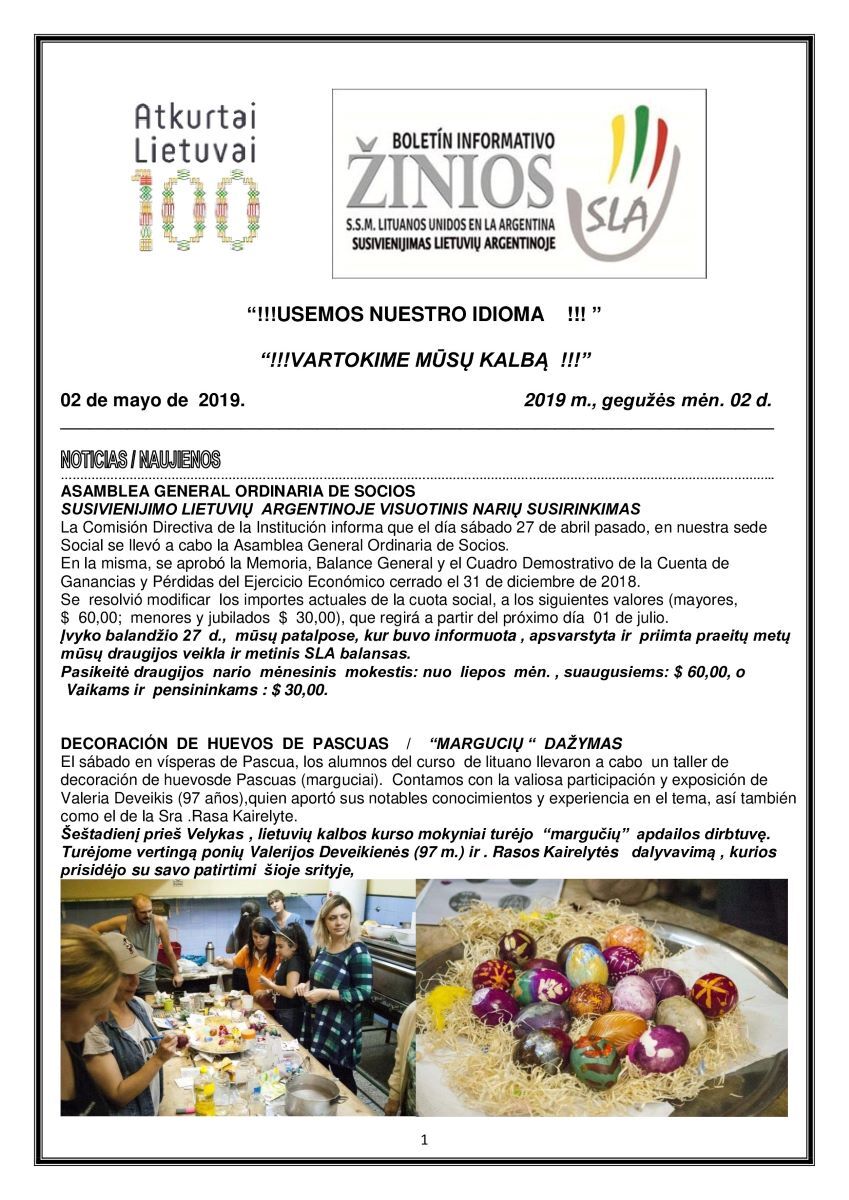
May 2, 2019
Žinios – News
Boletin informativo Sociedad de S.M. Lituanos Unidos en la Argentina
The Information Bulletin of the Mutual Aid Society (SM – Socorro mutuo or mutual aid) of United Lithuanians in Argentina is the literal translation of the Spanish-language title of the publication, with the word News in Lithuanian at the end. It was also known as the bulletin of the “Susivienijimas lietuvių Argentinoje”, the Union of Lithuanians in Argentina, with the short form SLA, an organization established in 1914 in Buenos Aires. The monthly publication provided information for its members, their friends and anyone interested in the activities of the club. From June 1981 to July, 2019, it was published in Spanish, and from 2002 all articles were translated into Lithuanian. It is the last Lithuanian publication to be published in Argentina and in all of South America.
The print version of the bulletin had a circulation of 150 and was distributed free of charge to Lithuanians. It was also emailed on request to over 400 readers in Argentina, Europe and North America and funded by the organization. Until July 2009, the editor was Alberto Stalioraitis, and the articles were translated into Lithuanian by Arnaldo Vezbickas, who took over in August 2009, after Stalioraitis died. SLA News was published for 38 years, informing members and Argentinian Lithuanians about the organization’s activities and what was happening in Argentina, Lithuania, and the World Lithuanian Community, with particular attention to Lithuanian language learning. With times changing and social media becoming more popular, the News became less relevant, and the SLA board decided to stop publication. -
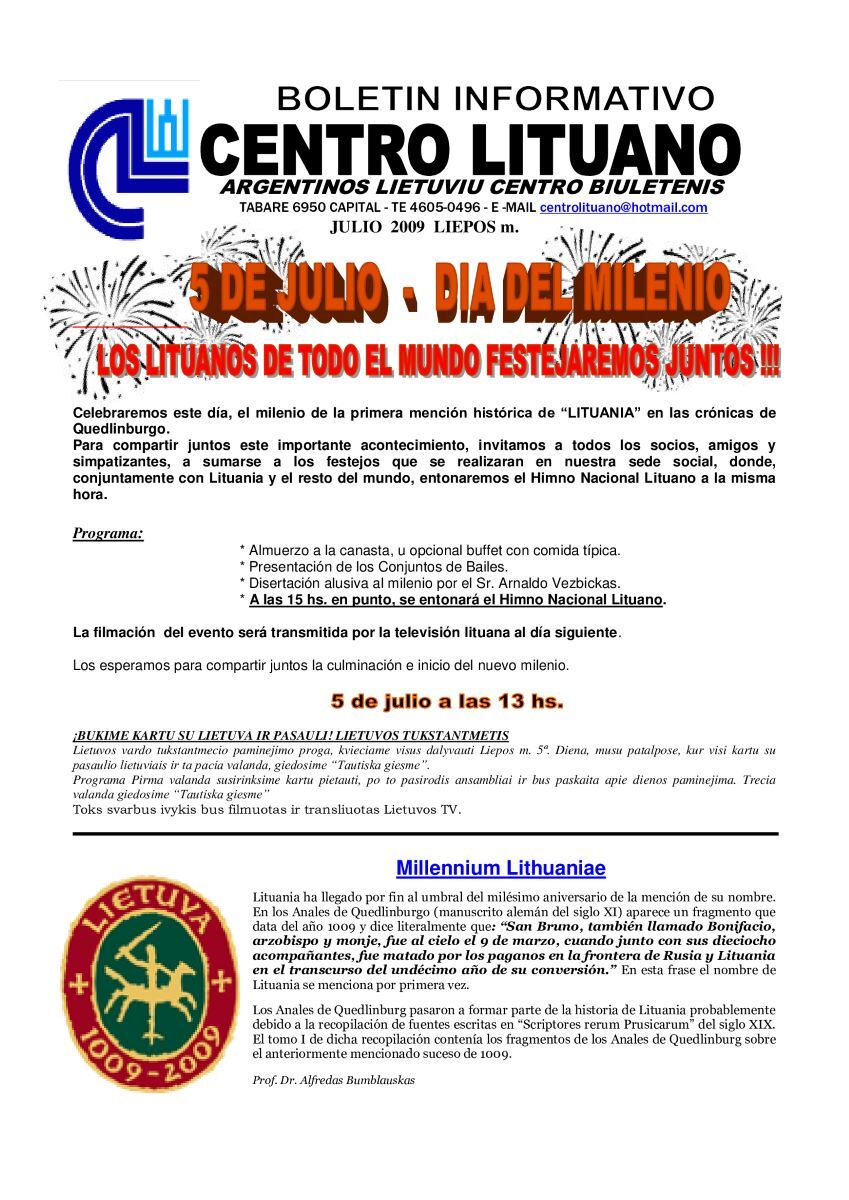
July, 2009
Lithuanian Centre Information Bulletin
Boletin informativo Centro Lituano
The monthly bulletin of the Argentinian Lithuanian Centre, established in 1926 in Buenos Aires, informs its members about local social and cultural life, Lithuanians living elsewhere and various aspects of Lithuanian culture and history. Published by third generation Argentinian Lithuanians, it was an illustrated, 14- to 20-page publication with a fairly long lifespan – begun in 2001, its last issue came out in December, 2013. The editor was Marta Matulavičiūtė-Pilkienė. Articles were printed in Spanish, although part of the news was also written in Lithuanian.
At about the same time other Argentinian Lithuanian associations were also publishing bulletins, for example, the Argentinian Lithuanian Union “Nemunas“. This was a non-regular publication of varying content, which probably encountered production difficulties. From 200 to 300 printed copies were distributed by mail and a similar number by email. Content was dependent on monthly events at the Centre, and also ran condolences, birth and wedding announcements and congratulatory notices, as well as news from other Lithuanian communities, including Argentinian-Lithuanian youth groups in an effort to interest them in Lithuanian activities. Each bulletin ended with editorial news and contact information. It is unclear why it stopped publication, but it was likely due to lack of both financial and administrative support. Other media also became more popular. Review of several years’ issues shows that much of the material was reprinted from the past. In 2011, a triple issue for January, February and March was published, and a double for August and September of 2012. The final issue came out in December, 2013, with brief information about past events and recipes for traditional Christmas foods. No information is available about any later issues. -
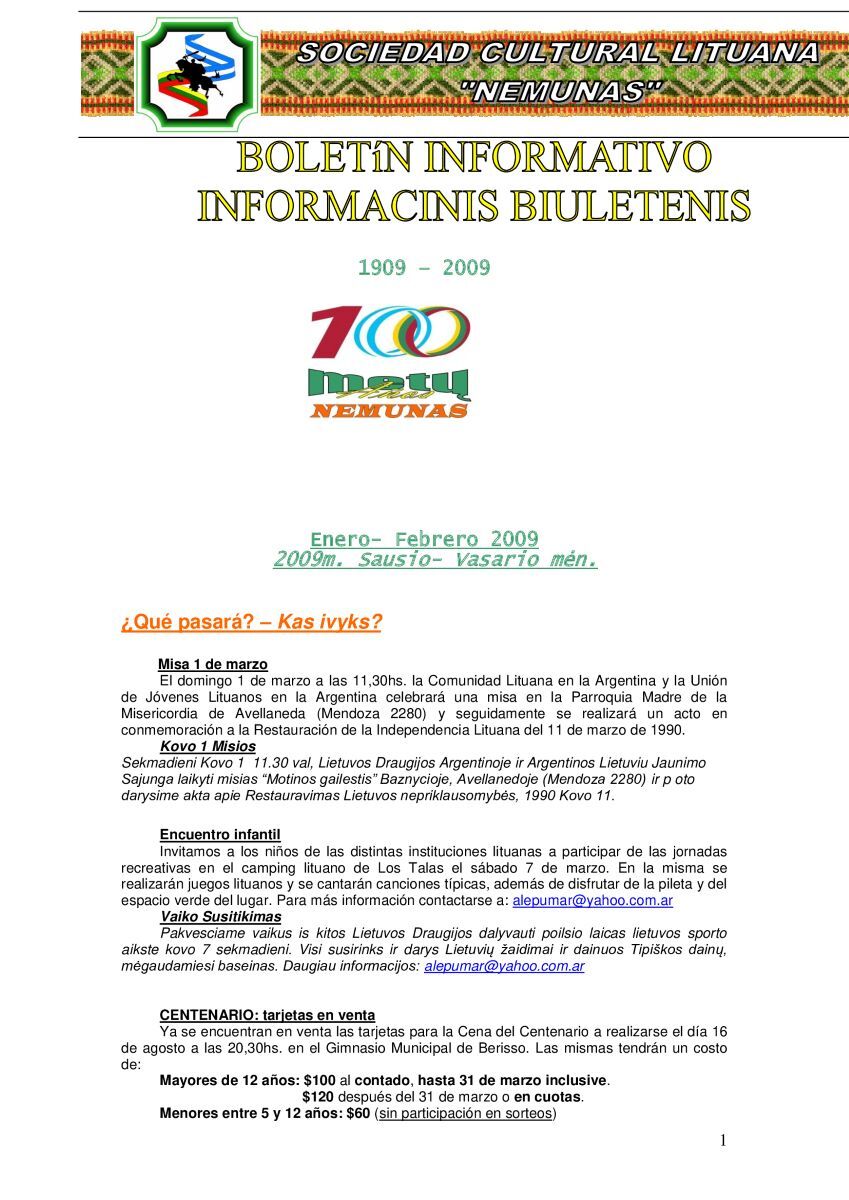
January-February, 2009
Information Bulletin of the Lithuanian Cultural Society “Nemunas”
Boletin informativo Sociedad Cultural Lituana “Nemunas”
Named after the largest river in Lithuania, the Nemunas Society is the oldest Argentinian Lithuanian organization in South America, founded in 1909. From 2007 to 2011 its bulletin was distributed electronically to members and friends. The 7 to 11-page publication was issued once every two or three months, under editor Alejandra Pumar Žebrauskas. Content was in Spanish, with summaries in Lithuanian. It was intended to promote communication among Argentina’s Lithuanians, provide news about local Lithuanians and share interesting and relevant information about Argentina and Lithuania. The newsletter was truly a chronicle of the “Nemunas” Society, reflecting its activities and events under headlines such as “What happened?” and “What’s next?”.
A special issue was published in 2011. Printed in Lithuanian only, it provided full coverage of “Nemunas” activities. “We would like to announce that Lithuanian lessons are given every week on our premises by former students of February 16th High School (Germany) and of Vilnius University. These students were given grants to attend those schools and were able to learn the Lithuanian language and customs. Every week we have Lithuanian folk dance rehearsals for the children’s ensemble “Skaidra”, the youth group “Nemunas”, the seniors’ group “Griaustinis” and the veterans’ group “Pipiras”, with a total of 90 dancers. We also celebrate February 16 and March 11 independence commemorations at our Lithuanian monument “Rūpintojėlis“ (Pensive Christ).” This short, four-page issue was probably the last, superseded by Facebook and other social media. -
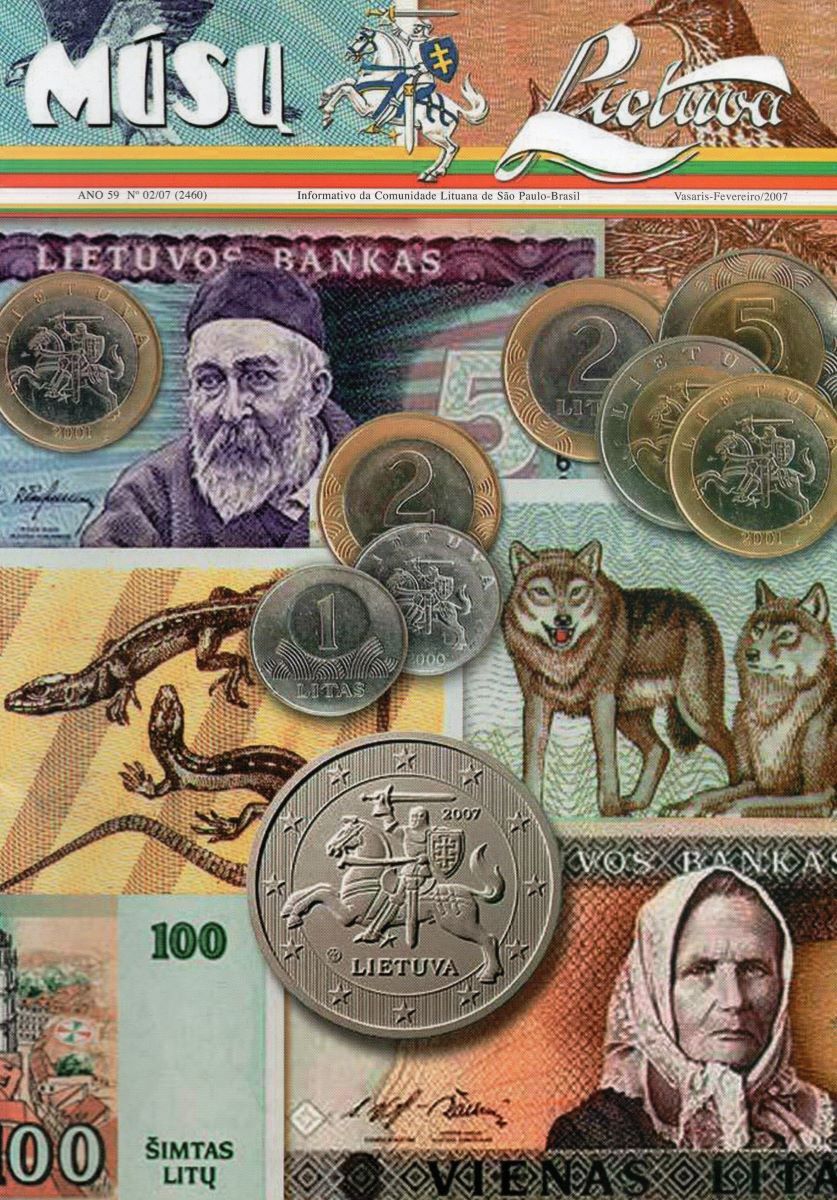
February, 2007, No. 2460
Our Lithuania
Mūsų Lietuva
Monsignor Pijus Ragažinskas was the founder of the Brazilian Lithuanian Catholic magazine published in Sao Paulo from 1948 to 2015. Our Lithuania described the activities of Lithuanian communities and individuals in Brazil and other countries, with emphasis on Lithuanian culture and history. In the 1980’s and 1990’s, Our Lithuania was published with supplements, however financial and production difficulties often caused delays. Issue No. 1-2 of 1990 explained that publication was delayed due the breakdown of a word processor. To continue the magazine, more staff was needed to manage subscriptions, donations, advertising and events. Most contributors were Silesians or Jesuits who were dedicated to the work but were also often assigned to other countries, or passed away.
In 2002 the magazine was taken on by the Our Lithuania Association, and published in Lithuanian and Portuguese, eventually becoming an attractively illustrated monthly magazine. It was distributed by mail to 500 subscribers throught the world. After 1990, editorial staff consisted of Pranas Gavėnas, Petras Rukšys, and Sandra Mikalauskas-Petroff, under the direction of Vytautas Bacevičius. The magazine celebrated 60 years of publishing in 2008, but its future was uncertain. From 2013 publication became infrequent, and the third issue of 2015 was the last, with readers being urged to renew their subscriptions and suggest new topics to ensure its continuity. Why did the Lithuanian press disappear from Brazil? Perhaps there were insufficient funds, contributors or direction, or there was simply no longer a need for it. At this time the Brazilian Lithuanian community is deciding whether to resuscitate the magazine on the internet.
Markas Lipas, long-time writer for Our Lithuania, expresses his views about work on the magazine here. -
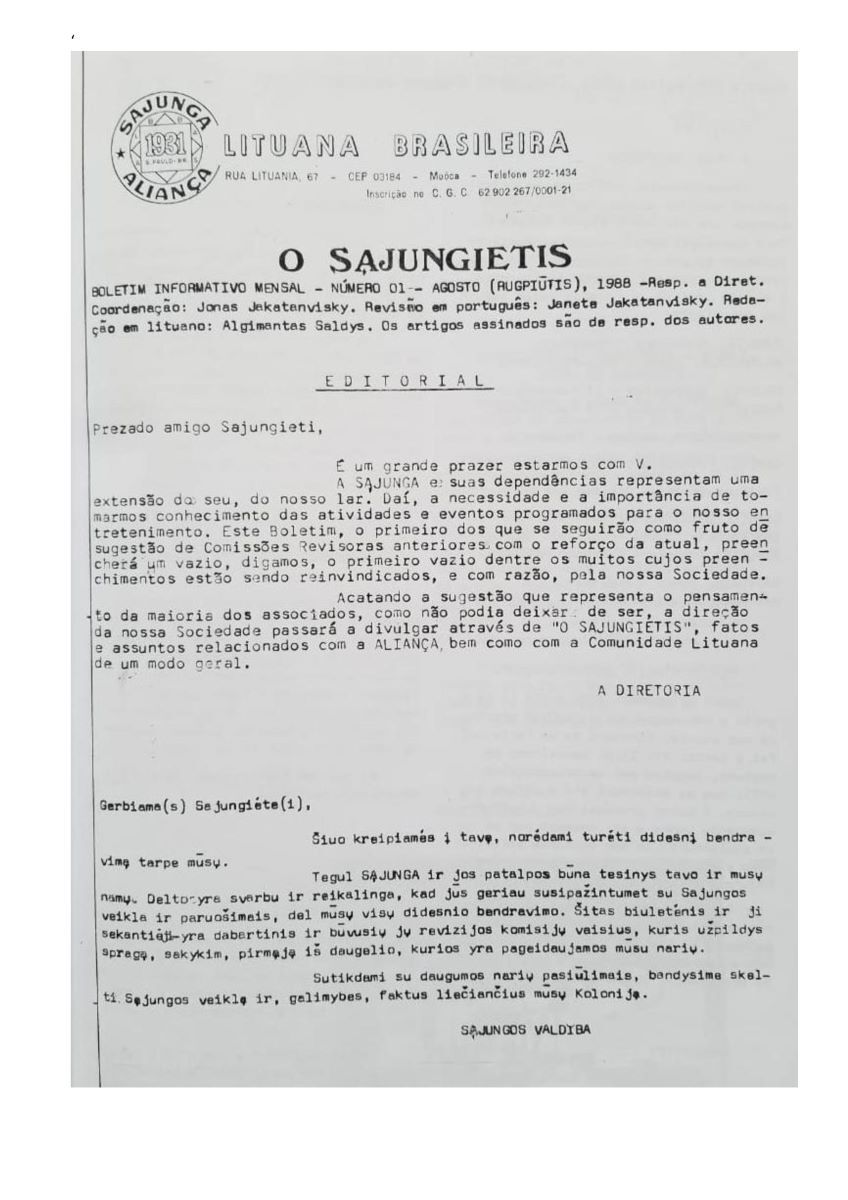
No. 1, 1988
Dear Member*
O Sąjungietis
The founder and editor of the monthly bulletin published by the Brazilian Lithuanian Association was Jonas Jakatanvisky. The first issue was published in August of 1988, in lieu of the former irregularly issued Association. It was an essential form of communication with association members, also distributed to other Lithuanians on request. Members contributed articles and photos. The articles were published in Portuguese, with some Lithuanian translations. Content included news, reports on monthly events, announcements, letters from readers, news from Lithuania, information about association members. The print version was published from 1988 to 1993 and 2009 to 2016, with 156 issues in all.
At first the bulletin was typed on a typewriter. The editor would type out the text and paste in the photos and illustrations, then take the original to be copied. For him, living in the suburbs, this was an onerous task, requiring extra funds. Bulletin No. 55 contained this announcement: “This is the penultimate issue of the newsletter. After the elections on March 28, a new council will decide on the future of the publication”. For a time the monthly was published on the internet due to lack of funds. From 2009 to 2012 it was produced online. Readers reacted most positively, sending congratulations and thanks to the editor. The layout was done professionally by the editor’s son Andrey Jakatanvisky. Publication ceased after J. Jakatanvisky’s death, as there was noone as energetic and creative as he was to carry on with this or other noteworthy work that he had accomplished.
His daughter Janete Jakatanvisky spoke about his work.

